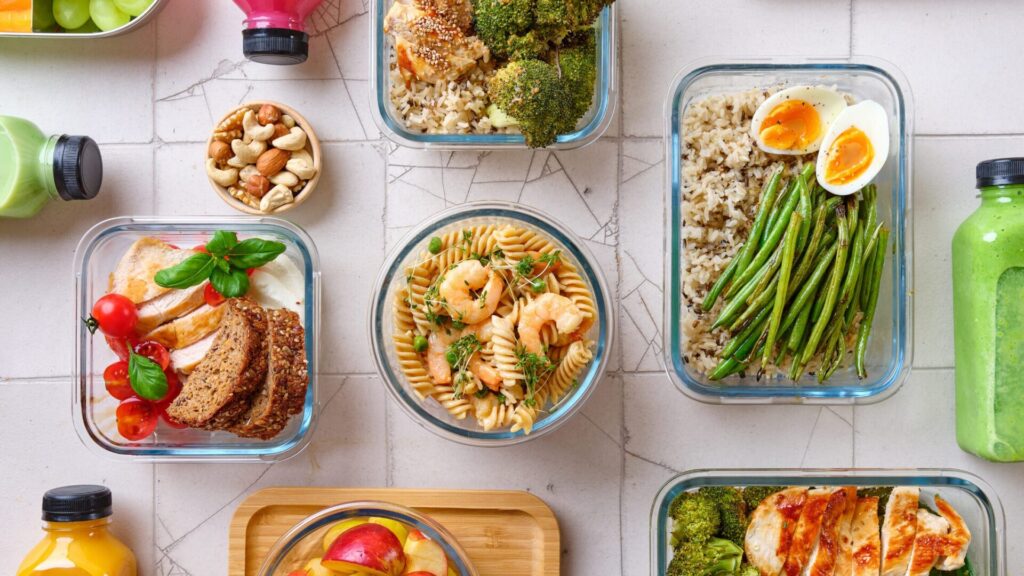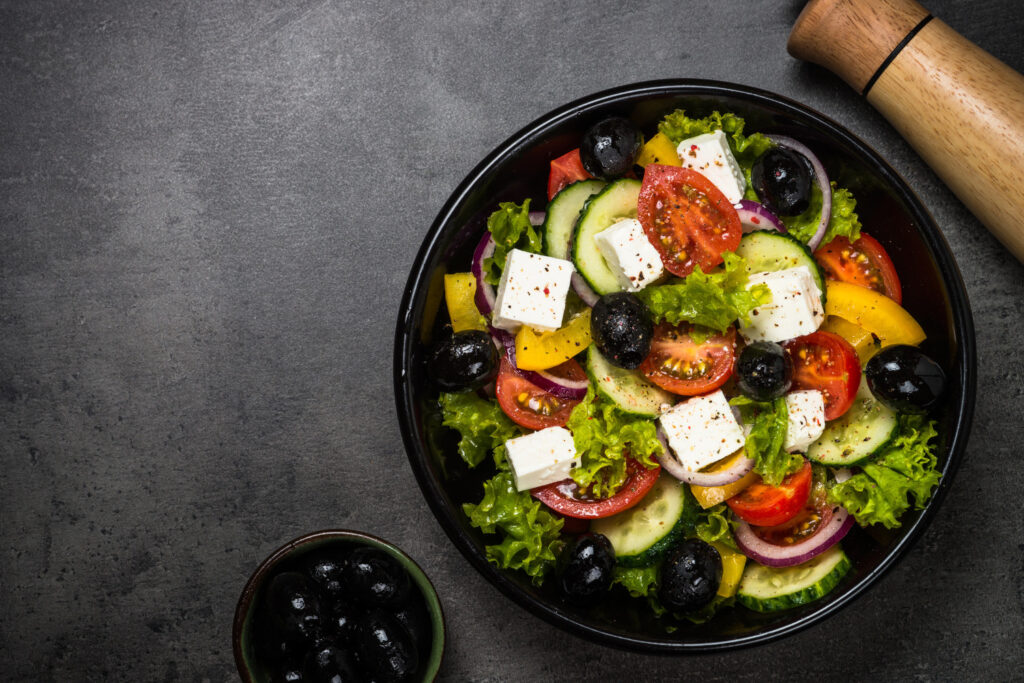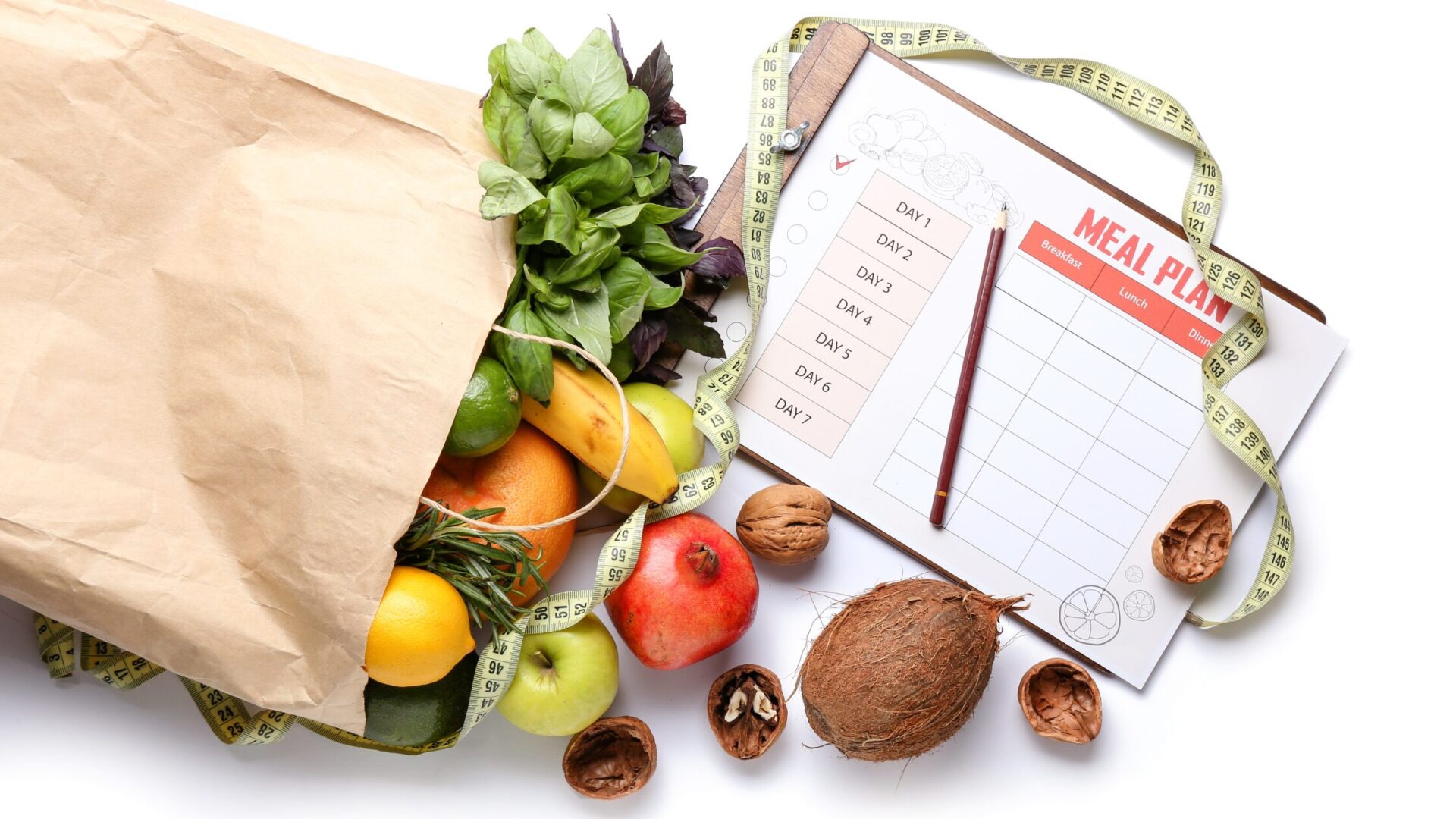How to Create a Personalized Meal Plan for Weight Loss In 2024
Introduction
Creating a personalized meal plan is a crucial step toward achieving weight loss goals in 2024. Unlike generic diet plans, a personalized approach addresses individual preferences, dietary restrictions, and nutritional needs, making it more sustainable and effective in the long run. This method ensures that the plan aligns with one’s lifestyle, making it easier to follow and reducing the chances of deviation.
Common Challenges in Diet Planning and Adherence
- Lack of Personalization: Many people struggle with generic diet plans that do not consider their personal preferences, leading to decreased motivation and adherence.
- Complexity and Time Constraints: Busy schedules can make it challenging to prepare complex meals or adhere to a strict diet plan.
- Nutritional Imbalances: Without proper guidance, there’s a risk of creating meal plans that are lacking in essential nutrients, which can affect overall health.
- Sustainability: Many diet plans are difficult to maintain over a long period, leading to a cycle of yo-yo dieting and weight fluctuations.
Understanding Your Nutritional Needs

To create an effective weight loss meal plan, it’s vital to understand your nutritional needs which can significantly vary based on several personal factors. By calculating your calorie needs and macronutrient ratios, you’re laying a foundation for a plan that not only supports weight loss but also nurtures your body’s health.
Calculating Calorie Needs
The first step in understanding your nutritional needs is to calculate your daily calorie requirements. This calculation is based on your Basal Metabolic Rate (BMR) and your level of physical activity. Your BMR is the number of calories your body needs to perform basic life-sustaining functions like breathing, circulation, and cell production. Factors such as age, sex, weight, and height directly influence your BMR. Once you have your BMR, you then adjust that number based on your activity level, using the Harris-Benedict Equation:
- Sedentary (little to no exercise): BMR x 1.2
- Lightly active (light exercise/sports 1-3 days/week): BMR x 1.375
- Moderately active (moderate exercise/sports 3-5 days/week): BMR x 1.55
- Very active (hard exercise/sports 6-7 days a week): BMR x 1.725
- Super active (very hard exercise & a physical job): BMR x 1.9
This total gives you the number of calories you need to maintain your current weight. To lose weight, you would reduce your daily calorie intake from this maintenance level.
Determining Macronutrient Ratios

Once you’ve established your calorie requirements, the next step is to split those calories between the three macronutrients: carbohydrates, proteins, and fats. A common starting ratio is 50% carbohydrates, 20% protein, and 30% fat. However, these ratios can be adjusted based on personal goals, dietary preferences, and specific health considerations. For weight loss, increasing protein intake and reducing carbohydrates can be beneficial for satiety and muscle maintenance.
- Carbohydrates: Vital for energy, they should mainly come from whole, unprocessed sources like vegetables, fruits, and whole grains.
- Proteins: Essential for muscle repair and growth, sources include meat, fish, dairy, and plant-based proteins like lentils and beans.
- Fats: Important for nutrient absorption and brain health, focus on healthy sources like avocados, nuts, seeds, and olive oil.
It’s important to remember that these are starting points, and flexibility is key to tailoring a meal plan that fits your lifestyle and preferences while meeting your weight loss goals.
Assessing Food Preferences and Allergies
Creating a flexible and enjoyable meal plan involves more than just calculating calories and macronutrients; it also requires a deep understanding of your personal food preferences and any allergies or dietary restrictions you may have. This step is crucial for crafting a diet that feels less like a strict regimen and more like a sustainable, pleasurable way of eating.
Guide on Incorporating Favorite Foods
- Balance and Moderation: Include your favorite foods in moderation, focusing on portion control to ensure they fit within your calorie and macronutrient goals.
- Healthier Alternatives: Look for healthier versions of your favorite foods. For example, if you love pizza, consider recipes with a cauliflower crust and leaner toppings.
- Make It From Scratch: Preparing meals at home allows you to control the ingredients, making it easier to include your preferred foods in a healthier manner. Here are some healthy recipes that can be tailored to include your favorites.
Accounting for Allergies or Dietary Restrictions
- Identify Safe Foods: Clearly outline which foods are safe to consume and which to avoid based on your allergies or dietary restrictions. Websites like Food Allergy Research & Education (FARE) provide valuable resources for managing food allergies.
- Cross-Contamination Awareness: Be mindful of cross-contamination, especially when eating out or preparing food in shared kitchens. This guide from the FDA offers tips on avoiding cross-contact.
- Substitute Wisely: For every restricted food item, find a healthy substitute that satisfies the nutritional requirement it fulfilled. For plant-based diets, NutritionFacts.org offers evidence-based advice on replacing animal products with plant-based alternatives.
Building Your Meal Plan
Creating a meal plan tailored to your weight loss goals involves careful consideration of each meal’s nutritional content and portion size. By focusing on a balanced intake of macronutrients throughout the day, you can enjoy a variety of foods while steadily moving toward your objectives.
Breakfast Options
- High-Protein Beginnings: Start your day with protein-rich foods like eggs, Greek yogurt, or a protein smoothie to keep you full longer. For example, an omelet with vegetables and a side of an avocado provides a balanced mix of proteins, fats, and carbs.
- Whole Grains for Energy: Incorporate whole grains such as oatmeal or whole-grain toast. These are excellent sources of complex carbohydrates that offer sustained energy. Consider adding berries or a banana to your oatmeal for extra fiber and antioxidants.
Lunch Ideas
- Lean Proteins and Veggies: Opt for a lean protein source like grilled chicken or fish, accompanied by a large portion of vegetables. Salads with a variety of colorful veggies, nuts, and a vinaigrette dressing are perfect for a nutritious lunch.
- Whole Grains and Legumes: Quinoa or brown rice can serve as a base for a hearty and healthy bowl. Add legumes like black beans or lentils for protein and fiber. Mixing in some vegetables and topping it with a sprinkle of seeds can enhance the nutrient profile.
Dinner Suggestions
- Variety and Balance: Ensure your dinner includes a balance of macronutrients. A piece of grilled salmon, a side of sweet potatoes, and steamed broccoli can make for a satisfying and nutritionally complete meal.
- Portion Control: Be mindful of portion sizes, especially during dinner. Using smaller plates can help avoid overeating. Remember, your dinner should satisfy your hunger but not leave you feeling overly full.
Snacks and Hydration
- Healthy Snacking: Choose snacks that contribute to your daily nutrient intake, such as mixed nuts, Greek yogurt, or sliced fruits.
- Stay Hydrated: Drink plenty of water throughout the day. Sometimes, thirst is mistaken for hunger. Keeping hydrated can prevent unnecessary snacking. Integrate herbal teas or water infused with fruits for variety.
Measuring and Adjusting Portions
- Use Measuring Tools: Initially, use measuring cups, spoons, or a food scale to get a sense of correct portion sizes.
- Listen to Your Body: Pay attention to hunger and fullness cues. Eating slowly and mindfully can help you recognize when you are satisfied, reducing the likelihood of overeating.
Building and following a structured meal plan does not have to be a restrictive experience. By allowing for flexibility and focusing on nutritional balance and portion control, you can create a diet that supports your weight loss goals while also fitting into your lifestyle and taste preferences.
Customizing Your Meal Plan with Sample Meals and Recipes

Creating a meal plan that’s both enjoyable and effective for weight loss can be simplified with a few sample meal ideas and recipes. Use these as a foundation to build upon based on your preferences and nutritional goals.
Sample Meal Ideas
Breakfast:
- Avocado Toast on Whole Grain Bread
- Mash half an avocado and spread it on toasted whole-grain bread. Top with cherry tomatoes, a sprinkle of salt, and a dash of pepper.
- Berry and Banana Smoothie
- Blend one banana, a half cup of mixed berries, a scoop of protein powder, a cup of almond milk, and a handful of spinach for a nutrient-packed start to your day.
Lunch:
- Quinoa Salad with Roasted Vegetables
- Toss cooked quinoa with a variety of roasted vegetables like zucchini, bell peppers, and red onions. Add a dressing of lemon juice, olive oil, salt, and pepper.
- Turkey and Hummus Wrap
- Spread hummus on a whole wheat wrap and fill with sliced turkey, cucumber, tomatoes, and lettuce for a satisfying midday meal.
Dinner:
- Grilled Chicken with Steamed Vegetables
- Grill a chicken breast seasoned with herbs and serve with a side of steamed broccoli and carrots.
- Salmon with Sweet Potato and Green Beans
- Bake a salmon fillet and serve with a baked sweet potato and sautéed green beans.
Recipes to Get You Started
Overnight Oats for Breakfast
- Ingredients: Rolled oats, almond milk, chia seeds, maple syrup, and your favorite fruits.
- Instructions: Combine ½ cup of oats, ¾ cup of almond milk, 1 tablespoon of chia seeds, and a drizzle of maple syrup in a jar. Refrigerate overnight. Top with fresh fruit before eating.
Grilled Veggie and Hummus Sandwich for Lunch
- Ingredients: Whole grain bread, hummus, assorted vegetables (zucchini, bell pepper, spinach), and feta cheese.
- Instructions: Grill slices of zucchini and bell pepper. Spread hummus on bread, add grilled vegetables, a few spinach leaves, and sprinkle with feta cheese. Enjoy it toasted or as is.
Stir-Fried Tofu with Brown Rice for Dinner
- Ingredients: Firm tofu, brown rice, mixed vegetables (broccoli, snap peas, carrots), soy sauce, and sesame oil.
- Instructions: Cook brown rice according to package instructions. In a pan, stir-fry tofu and vegetables in sesame oil. Season with soy sauce. Serve the stir-fry over the rice.
Each meal and recipe can be adjusted according to your dietary needs and preferences. Remember, the key to a successful meal plan is diversity and balance, ensuring you get all the essential nutrients while keeping your meals exciting and flavorful.
Incorporating Variety and Flexibility
Keeping your meal plan exciting and adaptable is crucial for long-term success and satisfaction. Here are some tips to inject variety into your meals and ensure your diet accommodates special occasions without setting back your progress.
Exploring New Foods and Flavors
- Experiment with International Cuisines: Trying recipes from different cultures can introduce a whole new range of flavors and ingredients to your diet, making meals more exciting.
- Seasonal Produce: Incorporate seasonal fruits and vegetables into your meals. They’re often fresher, tastier, and more nutritious, adding a new dimension to your dishes.
- Try New Recipes Weekly: Dedicate one meal each week to trying a new recipe. This can help keep your meal plan dynamic and prevent boredom.
Flexibility for Special Occasions
- Plan Ahead: If you know a special occasion or dining out is coming up, plan your meals around that. Consider eating lighter meals earlier in the day or increasing your physical activity to accommodate.
- Portion Control: Enjoy the special occasion but remain mindful of portion sizes. You can indulge in your favorite dishes in moderation without setting back your progress.
- Healthy Swaps: Look for healthier alternatives to traditional dishes. For instance, opt for grilled over fried foods, or choose a side salad instead of fries. This way, you can participate in the celebration without compromising your nutritional goals.
Tools and Resources for Meal Planning
Successfully implementing and sticking to a meal plan requires not just dedication and knowledge, but also the right tools and resources. To make meal planning and tracking more manageable and enjoyable, here are some recommended apps, books, and websites that can provide valuable assistance.
Recommended Apps
- MyFitnessPal: Offers a comprehensive food database, allowing you to log meals and track calories and nutrients easily. It also includes a barcode scanner for packaged foods.
- Paprika: Ideal for recipe management and meal planning, this app lets you save your favorite recipes from the web, plan your meals for the week, and create grocery lists.
- Mealime: Designed for busy individuals, Mealime helps create meal plans around your food preferences, allergies, and time constraints. It generates shopping lists and offers step-by-step cooking instructions.
Must-Read Books
- “The Meal Prep King Plan” by Meal Prep King: This book offers practical advice on meal prep and planning with a focus on saving time and money while eating healthily.
- “Eat, Drink, and Be Healthy” by Walter Willett: Provides insights into creating a balanced diet based on the latest nutritional science and includes recipes to get you started.
Helpful Websites
- Budget Bytes: An excellent resource for those looking to meal plan on a budget, offering cost-effective recipes and practical tips for saving money on groceries.
- EatingWell: Offers a vast collection of healthy recipes and meal plans, including options for special diets such as gluten-free, diabetic-friendly, and heart-healthy meals.
- ChooseMyPlate.gov: A resource provided by the U.S. Department of Agriculture, offering tools and tips for building a healthier diet, including a personalized meal planning tool.
Maintaining Your Meal Plan Long-Term
Ensuring the longevity of a meal plan is pivotal for achieving and sustaining your health and nutrition goals. Here are essential strategies for sticking to your plan, managing setbacks, and seamlessly adjusting your diet to meet evolving health needs or weight loss milestones.
Strategies for Sticking to Your Meal Plan
- Set Realistic Goals: Establish achievable nutrition and fitness goals. Unrealistic expectations can lead to frustration and derailment.
- Incorporate Variety: To avoid monotony, continuously introduce new foods and recipes into your meal plan. A diverse palette can help keep meals exciting and prevent boredom.
- Social Support: Engage friends or family members in your meal planning and preparation. Sharing the experience can provide motivation and accountability.
- Track Your Progress: Use apps or a journal to monitor your adherence to the meal plan and celebrate successes, no matter how small.
Dealing with Setbacks
- Be Kind to Yourself: Understand that setbacks are a normal part of any long-term plan. Treat yourself with compassion and avoid negative self-talk.
- Identify Triggers: Learn what prompts unhealthy eating habits. Identifying these triggers can help in developing coping strategies that align with your meal plan.
- Small Adjustments: If a setback occurs, make small, manageable adjustments to get back on track, rather than resorting to drastic changes that may not be sustainable.
Adjusting Your Meal Plan
- Regular Review and Update: As you reach your goals or your dietary needs change, take time to review and adjust your meal plan accordingly. This might mean consulting a nutritionist or revisiting your dietary research.
- Stay Informed: Nutritional science evolves continuously. Staying informed about the latest research can help you make educated decisions about adjusting your meal plan.
- Flexible Dieting: Consider adopting a flexible dieting approach, which allows for minor deviations from your meal plan without compromising overall progress.
Conclusion
Creating a personalized meal plan for weight loss is not just about shedding pounds; it’s about building a healthier, more vibrant life. The advantages of tailored meal planning include precise nutritional intake, consistency in healthy eating, and the flexibility to adapt to life’s unpredicted events without derailing your goals. By focusing on variety, incorporating seasonal produce, and leveraging the wealth of tools and resources available, you can maintain excitement and satisfaction within your diet, making it a sustainable part of your lifestyle. The joy is not just in the results but in the journey of discovering foods that nourish and satisfy, of learning and adjusting as your tastes and requirements evolve. Armed with a strong and adaptable plan, you are more equipped to face challenges, celebrate successes, and ultimately, transition to a healthier version of yourself. Begin your meal planning adventure today; a world of flavors, health benefits, and personal achievements awaits.



